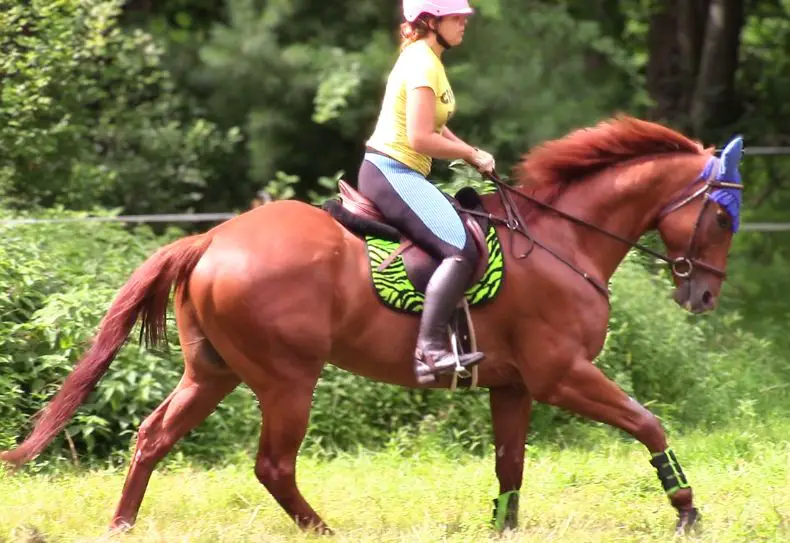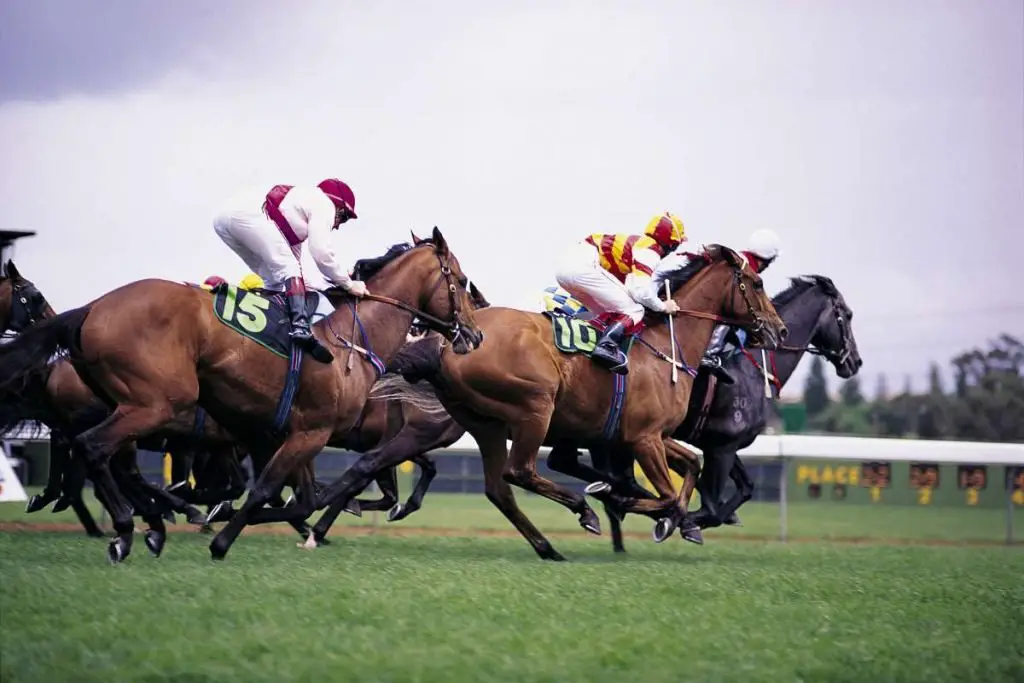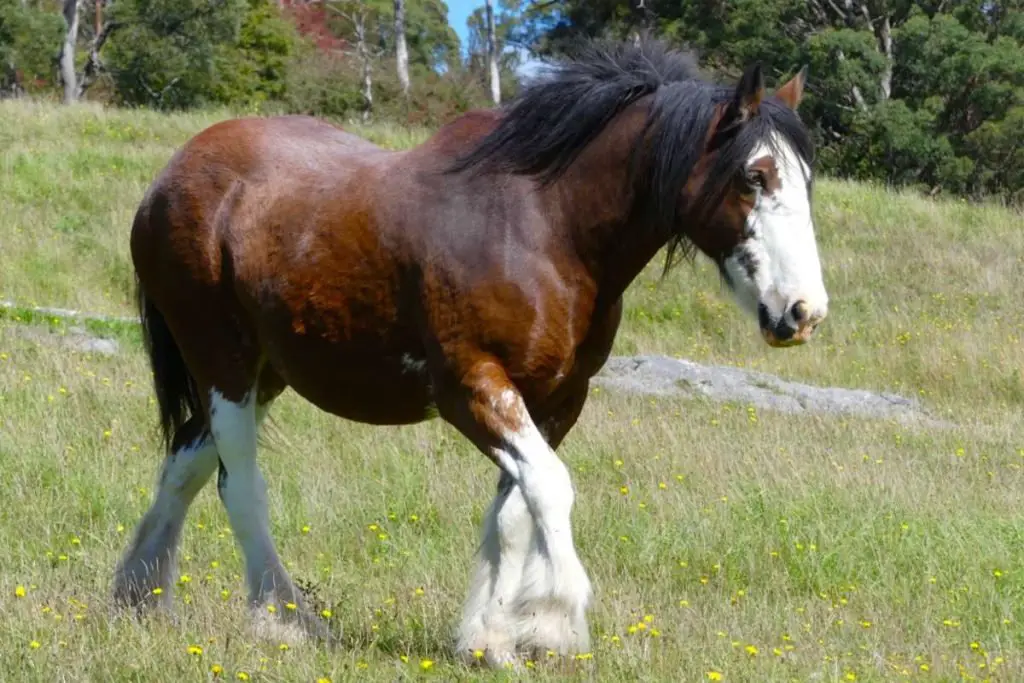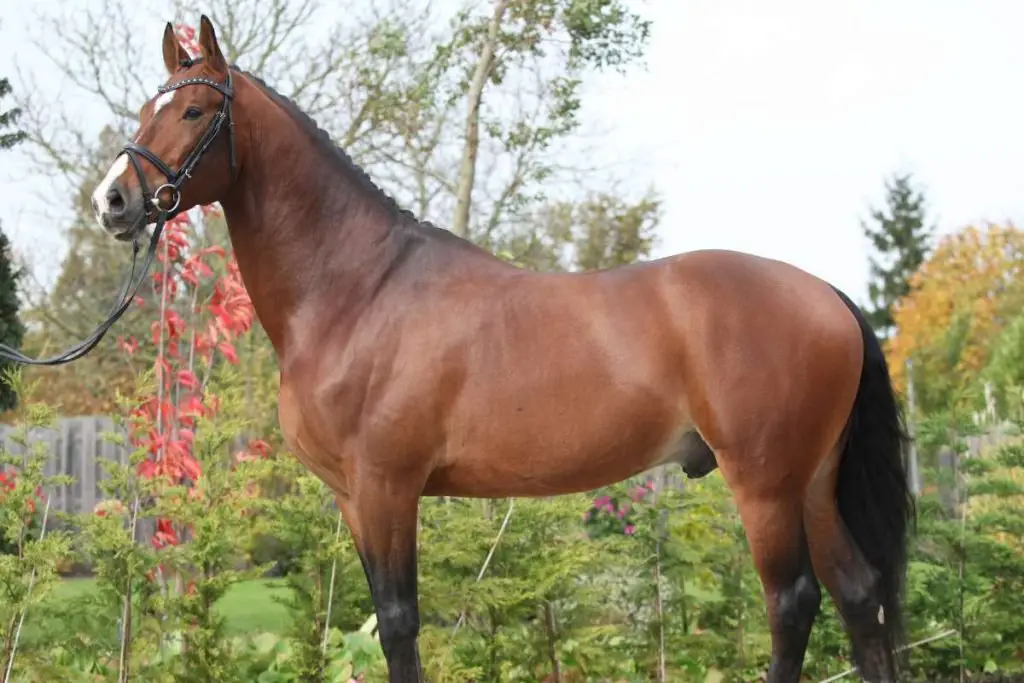Have you ever wondered why some horses are described as having “fire in their veins” while others are praised for their steady, unflappable nature?
The world of equestrianism is rich with terms like “hot-blooded,” “cold-blooded,” and “warm-blooded” to describe our equine companions. But do these labels reflect their actual blood temperature? Spoiler alert: it’s not about the mercury levels in their veins.
The terms hot-blooded, cold-blooded, and warm-blooded might bring to mind images of reptiles basking in the sun or mammals braving the winter cold. However, when it comes to horses, these classifications dive deeper into temperament and physical traits rather than how they regulate their body temperature. It’s easy to fall down the rabbit hole of misconceptions and myths, especially with so much conflicting information floating around.
In this exploration, we’re going beyond the surface to unravel the true meaning behind these age-old classifications. While the division into hot, warm, and cold bloods might seem like a blunt instrument, it offers invaluable insights into understanding a horse’s general behavior, abilities, and conformation.
And yes, when we speak of warmbloods, there’s a whole other layer of complexity and refinement involved, especially in the context of sport and competition horses — a fascinating topic we’ll dive into with more depth later on.
So, before you next hear someone mention a “coldblood” horse and imagine a creature more suited to a life among dinosaurs than in a stable, let’s clear the air and provide you with the knowledge to not just understand but appreciate the nuances of these fascinating blood type distinctions.
RELATED BLOG POST>> Cob Horses: What They Are Explained!
Hot-Blooded Horses

When we speak of “fire in their veins,” hot-blooded horses epitomize this expression. Known for their high energy, speed, and remarkable stamina, hot-blooded breeds like Arabians, Thoroughbreds, Akhal-Teke and Barbs not only capture our imagination but also our hearts. These horses, with their dished heads, slender bodies, and high-set tails, embody the essence of agility and spirit.
Characteristics and Temperament Of Hot-blooded horses

Hot-blooded horses are marvels of nature, boasting thin skin, light coats, and a physique built for endurance and agility. Weighing between 800 to 1,200 pounds and standing 14 to 17 hands high, their physicality is matched by their spirited nature.
They are intelligent, quick learners, adaptable, but also, at times, can be nervous and sensitive. This sensitivity makes them more attuned to their environment and their handlers, often requiring softer brushes and a gentle touch, as I’ve noticed with my Thoroughbreds.
Personal Experiences with Thoroughbreds

My journey with five different Thoroughbreds has been a testament to the breed’s diverse temperament. From the laid-back to the high-strung, each horse brought its unique personality into the stable.
Not all were spooky, and their reactions to stimuli varied significantly. One was particularly lazy, another was easy going yet not without ambition, and one was so sensitive that it transformed grooming into a practice of mindfulness, preferring the softest brushes. These experiences underline the breed’s range, challenging the one-size-fits-all label often ascribed to hot-blooded horses.
Origins and Historical Significance Of Hot-blooded horses
The origins of hot-blooded horses in the deserts of North Africa and the Middle East have shaped not only their physical attributes but also their temperament. Bred by nomadic tribes who valued speed, stamina, and a close bond with their horses, these breeds have a rich history of being prized for their intelligence and spirited nature.
The influence of Arab ancestors is evident in their pretty heads and vivacious personalities, traits that made them highly sought after throughout history for both trade and warfare.
Modern Uses and Versatility Of Hot-blooded horses

Today, hot-blooded horses continue to excel in a variety of disciplines. They dominate the racing world, with Thoroughbreds leading in short-distance races and Arabians in endurance events. But their versatility doesn’t end there. From show jumping and dressage to polo and western disciplines, their adaptability and intelligence make them suitable for nearly every equestrian sport.
Their success in retraining programs for former racehorses further demonstrates their ability to transition from the track to new careers, underscoring their enduring appeal and the continued demand for these remarkable breeds.
Hot Blooded Horse Breeds

Incorporating the essence of hot-blooded horse breeds into our discussion enriches our understanding of these spirited equines. Among the constellation of horse breeds, hot-blooded horses shine for their refined elegance and spirited energy. This category, though smaller in number, boasts some of the most renowned and influential breeds in the equestrian world.
- The Arabian horse, with its unparalleled endurance and distinctive beauty, stands at the heart of the hot-blooded lineage.
- Thoroughbreds, celebrated for their speed and agility, have become synonymous with horse racing’s elite.
- The Akhal-Teke, known for its metallic sheen, offers a glimpse into ancient equine heritage, being a direct descendant of the Turkoman horse that once roamed Central Asia.
- The Barb, with roots in North Africa, contributes to the stamina and resilience found in today’s modern breeds.
Crossbreeding has played a crucial role in the evolution of equine excellence. The Anglo-Arabian, a fusion of Thoroughbred speed and Arabian endurance, exemplifies the best of both worlds, catering to a variety of disciplines with grace and versatility. This practice of crossbreeding has not only enriched the gene pool but has also led to the creation of horses that carry the legacy of their ancestors forward, adapting to the changing needs and challenges of the modern equestrian landscape.
Today, it’s challenging to find horse breeds that haven’t been touched by the genetic legacy of these hot-blooded ancestors.
The influence of the Arabian and Thoroughbred is particularly pervasive, with their traits being sought after for creating horses that excel not just in appearance but in a wide array of disciplines.
Cold Blooded Horses

In the world of equines, the term “cold-blooded” conjures images of gentle giants, towering with strength yet exuding an unmistakable calm. Unlike their hot-blooded counterparts, known for their fiery spirits and agility, cold-blooded horses are the embodiment of power paired with tranquility.
Breeds such as the Percheron, Shire, Clydesdale, and Belgian are the epitome of this group, each with a heritage deeply rooted in hard work and steady reliability.
RELATED BLOG POST>> 19 Capable Horse Breeds For Plus-Size Riders
characteristics Of The Cold Blood Horse

Cold-blooded horses are distinctively large, often towering over their equine relatives at heights ranging from 16 to 19 hands, and in extraordinary cases, even larger.
Weighing between 400 to 2,000 pounds, their size is matched by their kind-hearted nature, earning them the affectionate title of “gentle giants.” Their large, muscular build, including dinner plate-sized hooves and often feathered legs, reflects their origin as draft and work horses.
History and Origins Of These Gentle Giants
The origins of these magnificent beasts trace back to the harsh climates of the Ice Age, where survival necessitated a thick skin, heavy coat, and sturdy physique. As civilizations evolved, so did the roles of these horses, from plowing fields in medieval Europe to pulling heavy loads in the burgeoning cities of America.
The “Black Horse of Flanders,” often considered the progenitor of modern draft breeds, epitomizes the evolution of cold-blooded horses from ancient workhorses to contemporary champions of strength and resilience.
Cold Bloods In Modern Day

While the advent of machinery has shifted the traditional roles of cold-blooded horses, they continue to find their place in modern society. Beyond their historical contributions to agriculture and transportation, these horses now excel in leisure and therapeutic roles.
Their calm demeanor makes them perfect companions for therapeutic riding programs, offering comfort and stability to those in need. Additionally, their ability to accommodate larger riders and their participation in various riding disciplines, from dressage to trail riding, underscores their versatility and enduring appeal.
RELATED BLOG POST>> 11 Biggest Horse Breeds In The World
The Heart of the Cold Blood
The temperament of cold-blooded horses is as significant as their physical prowess.
Known for their friendly and gentle nature, they embody a patient and forgiving spirit that makes them ideal for riders and trainers of all levels. However, their size and strength require a respectful understanding of their capabilities, ensuring that their training is consistent and mindful of their well-being.
Cold Blood Horse Breeds

While the world of equine breeds is vast and varied, cold-blooded horses, with their majestic size and calm demeanor, hold a special place in the tapestry of horse history. Less commonly spotlighted than their hot and warm-blooded cousins, these breeds are the unsung heroes of the equine world, each bearing distinct traits honed by geography and necessity.
The Belgian Draft, renowned for its strength and gentle nature, has become a favorite in America, often seen pulling wagons and plows with an air of nobility.
Meanwhile, the Percheron combines elegance with power, its French origins giving it a certain je ne sais quoi that sets it apart in the show ring or on a frosty morning in the field.
The Clydesdale, with its iconic feathered feet, dances its way from Scotland into the hearts of horse lovers worldwide, not just in parades but also in therapy and riding programs.
The Shire, the gentle giant of England, boasts not just size but an unparalleled capacity for hard work, often found in forestry and heritage farming practices today.
Venturing beyond these well-known giants, the Suffolk Punch, with its chestnut coat and amiable personality, excels in both draft work and conservation grazing, proving that strength comes in many forms.
The American Cream Draft, a homegrown treasure, showcases the beauty of diversity within the United States, being the only draft breed native to the country.
From the rugged Ardennes of Europe, known for its stamina and hardiness, to the sleek Russian Heavy Draft, each breed contributes its chapter to the story of cold-blooded horses. Not to forget the smaller but equally sturdy breeds like the Fjord and the Gypsy Vanner, which challenge the traditional image of draft horses with their versatility and charm.
In a world that increasingly values speed and agility, the enduring presence of these cold-blooded breeds reminds us of the importance of strength, steadiness, and the quiet dignity that comes with a gentle touch. They may not be the stars of the racetrack or the show jumping arena, but in their resilience and calm, they teach us the value of patience and the beauty of a day’s hard work shared with a trusted companion.
Warm Blooded Horses

Warmblood horses represent a harmonious blend of the best traits from hot-blooded and cold-blooded horses. This unique combination results in horses that are not only athletic and capable in a range of sports but also possess a temperament that makes them highly trainable and agreeable partners for riders of all skill levels.
What Makes a Horse Warm-blooded?
The essence of what makes a horse warm-blooded lies in its lineage—a perfect balance between the fiery spirit of hot-blooded breeds and the stoic, gentle nature of cold-blooded types.
This mix endows warmbloods with a temperament that is both eager and manageable, making them suitable for a wide variety of disciplines. Whether stemming from a direct mix of hot and cold bloodlines or being bred within the warmblood group, these horses are designed for both physical and mental versatility.
Keep in mind, most warmblood horses are not considered “true” warmblood breeds because of these strict breeding requirements. They are still referred to as “warmbloods” by many because they don’t fit into the coldblood or hotblood type, and because they are still mixed with varying degrees of hot and coldblood lineage, they are technically still seen as warmblood types.
The Spectrum of Warmblood Breeds

Originating predominantly from Europe, warmbloods encompass a range of breeds, each with its unique characteristics and specialties.
The breeding heartlands of Germany have given us some of the most renowned warmbloods, including the Hanoverian, Trakehner, Holsteiner, and Oldenburg. Each of these breeds brings its distinct strengths to the fore, whether it be in dressage, show jumping, or eventing, underpinning their widespread acclaim and preference among equestrians worldwide.
Expanding beyond the German borders, other European countries have also contributed classic warmblood breeds to the equestrian world. The Dutch Warmblood (KWPN) from the Netherlands, Swiss Warmblood from Switzerland, Selle Français from France, and Belgian Warmblood from Belgium are testament to the rich equestrian heritage and breeding expertise that spans the continent.
These breeds, much like their German counterparts, have earned a place at the pinnacle of competitive equestrian sports, often dominating the leaderboards in Olympic disciplines.
It’s noteworthy that warmbloods’ influence is not confined to Europe. In the United States, several horse breeds exhibit warmblood characteristics and are embraced within the warmblood category.
Breeds such as the Mustang, Morgan, Standardbred, Quarter Horse, Paint Horse, Appaloosa, Saddlebred, and Tennessee Walking Horse, though diverse in their origins and uses, share the athletic conformation and adaptable temperament typical of warmbloods. This inclusion underscores the broad definition of warmbloods and their adaptability across various equestrian endeavors.
RELATED BLOG POST>> Complete Guide To Baroque Horses: The Epitome Of Elegance
From History to Modern Day

The journey of warmblood horses from their origins to present-day glory is a testament to human ingenuity in horse breeding. Historically used as war horses, draft animals, and carriage horses, the advent of mechanization shifted their roles significantly.
Today, warmbloods have been repurposed and refined, excelling in sports and leisure activities thanks to their ancestors’ adaptability and strength.
The Role of Breeding and Development
Selective breeding has been pivotal in evolving the warmblood horse into a sport and leisure animal par excellence.
By carefully choosing traits from cold-blood ancestors for robustness and mixing them with the agility and spirit of hot-blood breeds, breeders have crafted a horse that excels in athleticism and cooperativeness.
State involvement and breed societies have further honed these breeds through performance requirements, ensuring that only the best traits are passed down through generations.
Warmbloods in Competition and Leisure

Warmbloods shine brightly in competitive sports, with many breeds achieving top honors in Olympic disciplines. Their success is not limited to the arena, as these horses also serve as fantastic leisure companions, offering riders a blend of strength, agility, and a calm demeanor.
From the high-adrenaline world of showjumping to the serene trails enjoyed by leisure riders, warmbloods demonstrate their versatility and enduring appeal across the equestrian spectrum.
Hot, Cold And Warm-blood Comparison Chart
| Type | Temperament | Environment | Characteristics | Most Common Uses | Breed Examples |
|---|---|---|---|---|---|
| Hotblood | hot head, feisty and sensitive | warm, desert-like climates | Slender athletic build, long neck and long limbs, smaller hooves. | Racing, endurance | Arabian Thoroughbred Akhal Teke Barb |
| Coldblood | calm and cool, laid back | cold, harsh climates | Large stocky build. Thick strong neck. Big boned legs and large hooves. Thick coat, mane and tail. Sometimes feathering on legs. | Farming & Forestry work, hauling heavy loads | Clydesdale Percheron Shire Belgian Suffolk Punch |
| Warmblood | ranges from energetic and sensitive to laid back and lazy | originated in Europe | Good sized bone. Medium sized hooves. Strong hind quarters. Thick mane and tail. | All levels and types of equestrian sports | Hanoverian Dutch Warmblood Trakehner |
FAQ’s About Horse Blood Temperament
What are Horse Types?
Horses and ponies are classified into categories known as breeds and types. Although there’s a variety of ways to group them, four primary horse types encompass all horses, each with further subcategories.
Originating from historical and theoretical backgrounds, the earliest horse classifications are hot-blooded and cold-blooded, with warmbloods, ponies, and miniatures evolving over time.
The Four Main Horse Types:
- Heavy Horse: These include the larger, cold-blooded breeds known for their strength and calm demeanor, fitting the heavy horse category.
- Light Horse: Both warmbloods and hotbloods, known for their speed, agility, and spirited nature, are categorized here.
- Pony: Smaller than horses, ponies have a distinct build and temperament, catering to various equestrian needs.
- Miniature Horse: The smallest of the group, these horses are bred to be tiny while retaining horse-like characteristics.
Categorizing Hot, Cold, and Warmbloods:
- Cold-bloods are synonymous with heavy horses, embodying strength and calmness.
- Hot-bloods and warmbloods align with light horses, celebrated for their agility and versatility.
Are Warmbloods Good For Beginners?
Warmbloods can be good for beginners when they have been well trained and have a calm disposition.
When selecting a horse for a novice, bear in mind that the horse’s personality and attitude are important considerations. Warmbloods are still very strong and may become out of control if they are feeling to full of energy.
A beginner’s horse should ideally have at least a few years of experience working under saddle, although this is not always possible.
Although many warmblood breeds are excellent for novice riders, good beginner horses may be found in many types, and should always be evaluated on a case-by-case basis.
Can You Ride Draft Horses?
Yes, you can ride draft horses. Even though most draft horses aren’t meant to be ridden, they make great riding horses for fun.
Riding heavy horses has become more popular within the past couple decades. Not only can draft horses accommodate larger or heavier riders, but they are also generally more easy-going and laid-back.
Draft horses are also often used as police mounts owing to their calm demeanor and power.
Draft horses are sometimes seen as more lazy and less sensitive to the aids, but more and more, they are being seen in all different riding disciplines, from western to trail riding to dressage and eventing.
Are Draft Horses Friendly?
Draft horses tend to be very friendly and gentle. Many people like to work with draft horses because of their kind personalities and friendly nature.
Even though draft horses tend to be friendly, it is important to realize that sometimes, due to their size, they do learn that they can pull their weight around.
For example, if they don’t want to do something or want to go in a different direction, they use their strength to get what they want.
Even though draft horses are friendly, they still need consistent and correct training to be safe to handle.
Is A Quarter Horse A Hot Blood?
American Quarter Horses are neither hotbloods nor coldbloods; they are, however, the descendants of hotblood and coldblood breeds, making them a warmblood type.
Some argue that Quarter Horses are not a warmblood horse breed because they lack the necessary coldblood genetics.
It is true that Quarter Horses are not considered a warmblood horse breed, however, they are a warmblood by type because they are not pure hotblood and do have some coldblood mixed into the breed.
Are Andalusian Horses Hot Blooded?
Some say Andalusians also known as Iberian horses are hotbloods because of their purity but more often they are thought of as warmbloods.
Andalusians are not considered a classic warmblood breed anymore; they are better known as baroque horses. However, they were once thought to be Europe’s first warmblood.
Though officially not a warmblood breed, Andalusian horses are a warmblood type. Andalusian horses were crossed with East Asian hotblood horses and Northern European coldblood horses.
The Romans brought the Camargue horse, the Arabs brought the Oriental horse, and the Goths brought the Gotland. All of these horses were added to the Andalusian gene pool.
Thus, it has been suggested that the Andalusian was the first European “warmblood,” a cross between heavy European and lighter Oriental horses.
Conclusion About Hotblood, Coldblood And Warmblood Horses

Depending on their breed and temperament type, horses are called coldbloods, warmbloods, or hotbloods.
Coldbloods are generally heavier and have more hair because they were raised in cold places and were used for jobs that required them to carry a lot of weight.
Hotbloods are descended from the scorching deserts of Arabia and the Middle East; therefore, they have light hair and bones, are quick-witted and spirited.
Warmbloods are middleweight horses with different degrees of cold and hotblood ancestry. They often succeed in the disciplines of dressage and showjumping.
Which type of horse is your favorite (Hot, Warm, or Cold blood)?
Cheers, Kacey

